Thanks to Professor Martin Henig for suggesting the date of the mosaic in Rome.


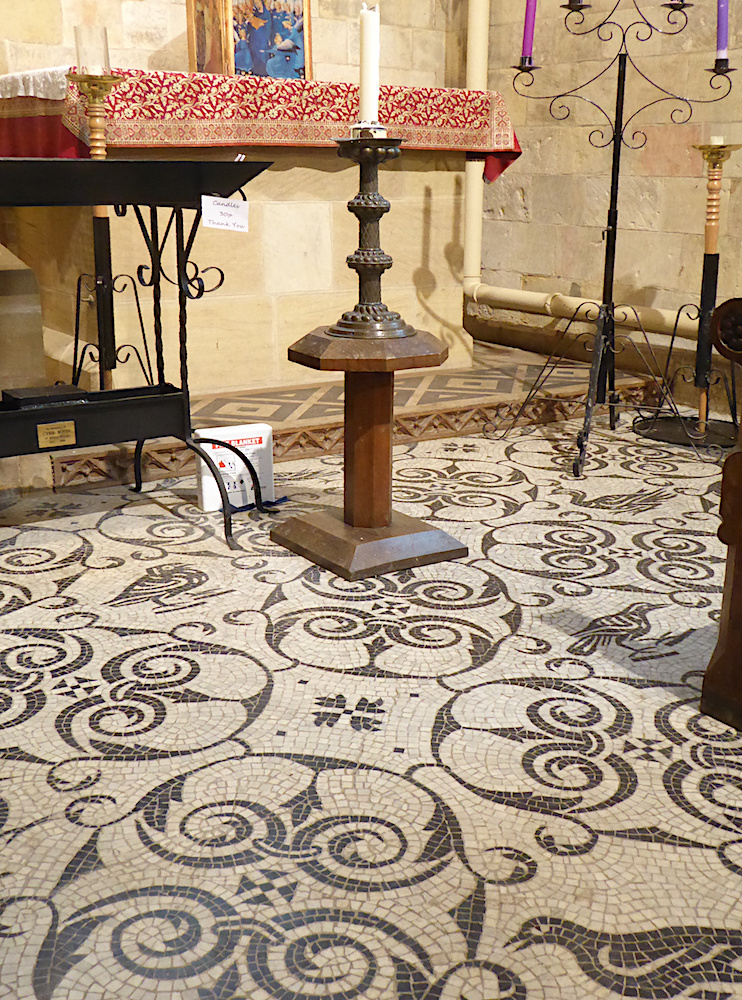
Left to right: a) Looking west to the baptistery. b) Looking east in the north aisle. c) Side chapel in the south aisle.
The mosaic floor was installed in 1902 to the nave and side aisles of St Edith's, Bishop Wilton in the East Riding of Yorkshire, a church which had been almost totally rebuilt in a restoration by J. L. Pearson for Sir Tatton Sykes I in 1858-9. The south doorway and chancel arch retain much interesting mid-twelfth-century sculpture, but the rest is a Victorian/Edwardian extravaganza, of which the most memorable beauty is this floor.
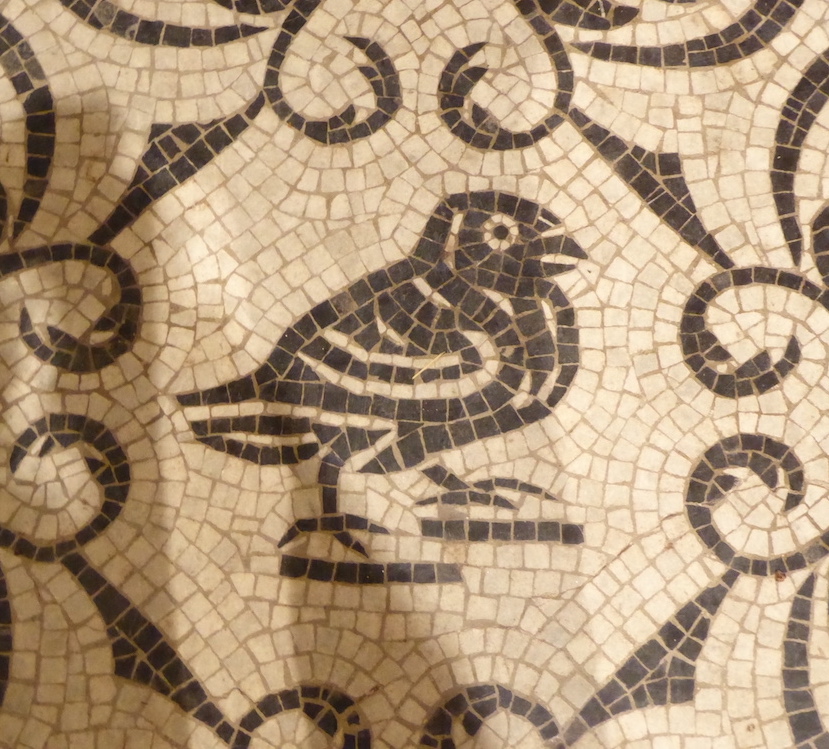
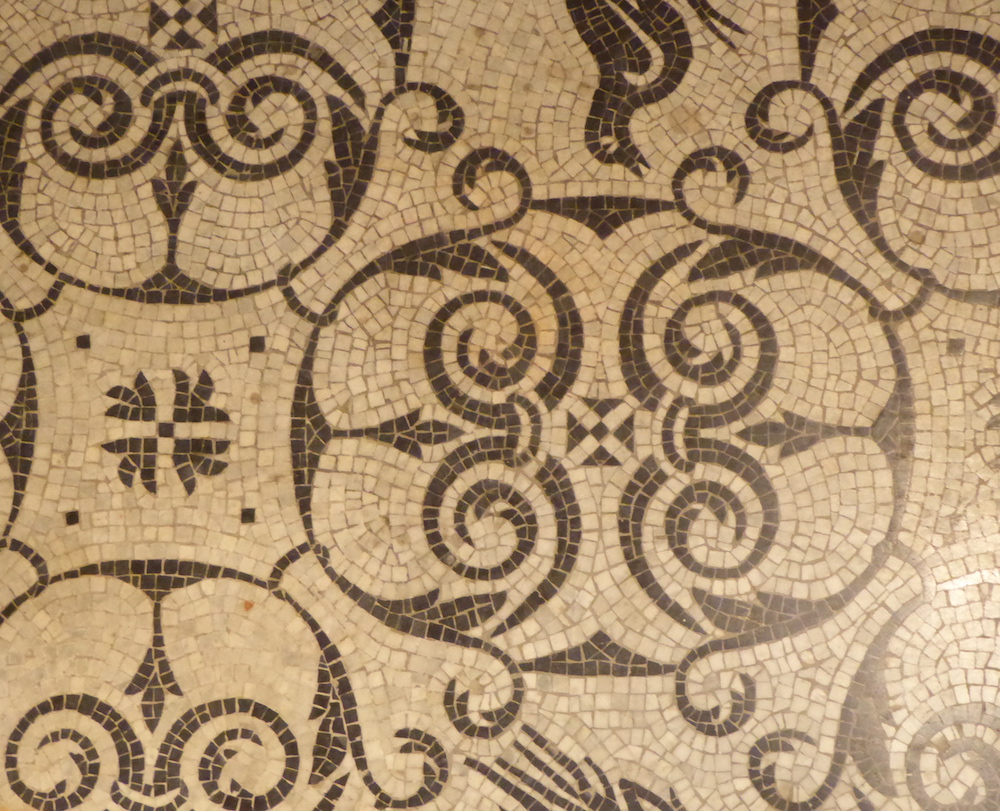
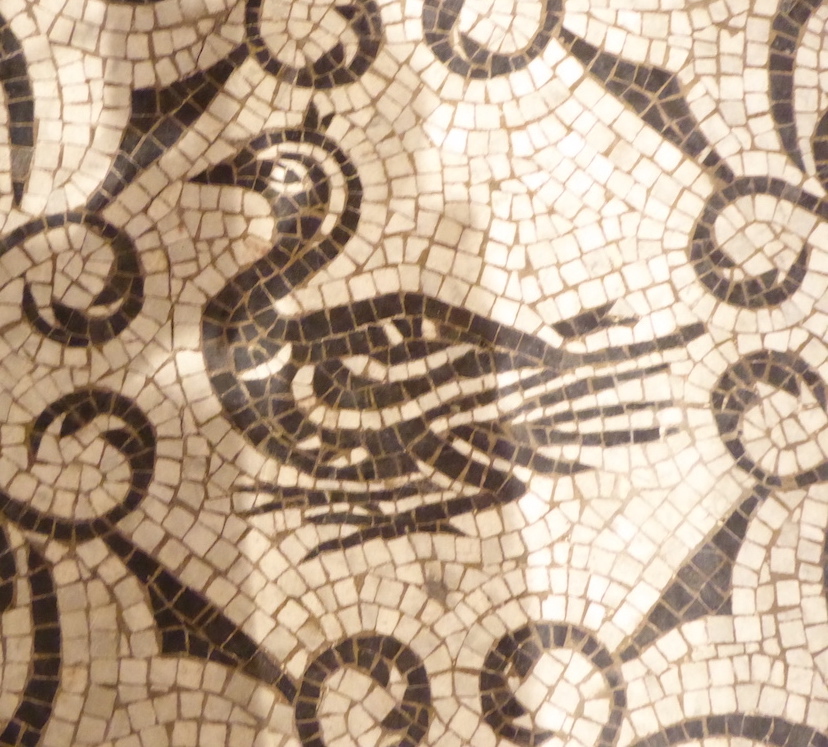
Details from the mosaic.
Designed by Temple Moore and made by the Salviati company, the floor is said to have been copied from a floor in the Vatican (Pevsner & Neave 2002, 332). There is a Roman mosaic of the first or second century reset in the Sala degli Animali of the Vatican Museum which was almost certainly the direct model. Perhaps the floor had been seen by one of the Sykes family visiting Rome. There is no sign of any attempt to improve on this original, but a remarkably careful copy was made: the Italians were used to restoration in a way that the Victorians did not always value.
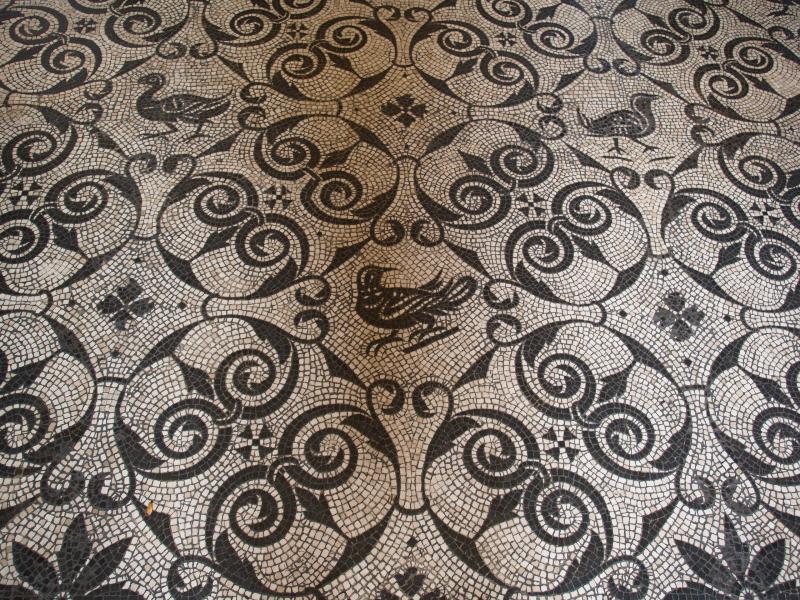
Vatican Museum, Hall of Animals, Roman mosaic.
Copyright cambridge2000.com.
Links to related materials
Photographs (apart from the last one) and text by Rita Wood. Please see the Cambridge2000 website for the terms under which the last image can be reproduced. You may use the others without prior permission for any scholarly or educational purpose as long as you (1) credit the photographer and (2) link your document to this URL in a web document or cite the Victorian Web in a print one. [Click on all the images to enlarge them.]
Bibliography
Pevsner, Nikolaus, and David Neave. Yorkshire: York and the East Riding. New Haven and London: Yale University Press, 2002.
Created 10 January 2022